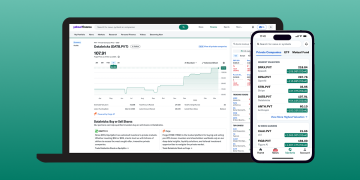The Organization of the Petroleum Exporting Countries (Opec) member countries and non-OPEC oil producers, “Opec +” recently announced the extension of voluntary production cuts, but said that after the end of September, it will gradually withdraw some production cuts depending on market conditions. The mixed signals sent by the plan caused market concerns and international oil prices fell. Due to multiple uncertainties, the outlook for oil prices in the second half of the year is increasingly uncertain.
According to an Opec statement, eight Opec and non-OPEC producers decided to continue voluntary production cuts in the third quarter of this year. The voluntary production cut of 2.2 million barrels per day announced in November 2023 will be extended until the end of September this year, after which it will be gradually withdrawn depending on market conditions; Extend voluntary cuts of 1.65 million barrels a day announced in April last year until the end of 2025.
The “Opec +” production reduction plan is considered to be “seemingly reduced”, and the market’s interpretation is also mixed. On the one hand, the decision to continue production cuts is in line with market expectations and aims to further support oil prices; On the other hand, the supply of crude oil in the fourth quarter may increase with the withdrawal of production cuts, which is still a certain negative factor for oil prices.
Under the influence of the complex decision of “Opec +”, international oil prices fell sharply. Light crude for July delivery fell $2.77, or 3.6%, to $74.22 a barrel on the New York Mercantile Exchange as of the close of trading on June 3. London Brent crude for August delivery fell $2.75, or 3.39 per cent, to settle at $78.36 a barrel.
In view of the international crude oil market is still showing a complex situation of mixed bearish factors, the trend of oil prices in the second half of the year or face no small variables.

On the positive side, the extension of the production cut plan increases the possibility of a decline in crude oil inventories, and the summer is the peak season for refined oil consumption, and the oil market is about to embrace the opportunity for seasonal demand increases. In addition, the U.S. Department of Energy said on the 3rd that it will buy another 3 million barrels of oil for its Strategic Petroleum Reserve (SPR), the news may also boost prices. In this context, some analysts believe that there is some support for oil prices in the third quarter, and may even remain high.
At the same time, negative expectations on both sides of supply and demand are also hitting the market. Under the expectation that “Opec +” may gradually withdraw additional production cuts from October, the market is concerned that the tight supply pattern will be reversed. Recent signs of weak demand growth have also affected oil prices, many people believe that the outlook for global oil demand growth this year is not as optimistic as Opec expected, and with the seasonal weakening of refined oil consumption in the fourth quarter, crude oil fundamentals are weaker or more pressure.
CNBC reported that traders have become reluctant to buy crude futures contracts for delivery later this year due to fears of falling prices due to increased supply. According to Reuters, in view of the high interest rates and rising production in non-OPEC oil-producing countries such as the United States, the latest Opec + decision to cut production has made the outlook for oil prices increasingly bleak. Analysts at Mizuho Securities believe that unless geopolitical tensions escalate further, oil prices no longer have the possibility of rising to $100 a barrel. Goldman Sachs predicts that Brent crude could fall below the $75 to $90 price range.
However, “Opec +” also said that future action will still depend on market conditions, and the plan to gradually withdraw production cuts may also be reversed. This means that while there are signs of increased supply, the time may not yet be ripe for the withdrawal of additional production cuts, and action by major producers will remain dependent on supply and demand data and an assessment of the oil price situation at the end of the summer.
Analysts said that the fourth quarter of this year may be a turning point for the global crude oil market, and the important factors that have supported the oil price fundamentals for nearly a year may not be able to continue to provide strong support for the oil market. In addition to the dynamics of major oil producing countries, U.S. inflation data and the timing of the Federal Reserve’s interest rate cut will also affect oil prices. In addition, global economic indicators and geopolitical developments need to be closely monitored.






























